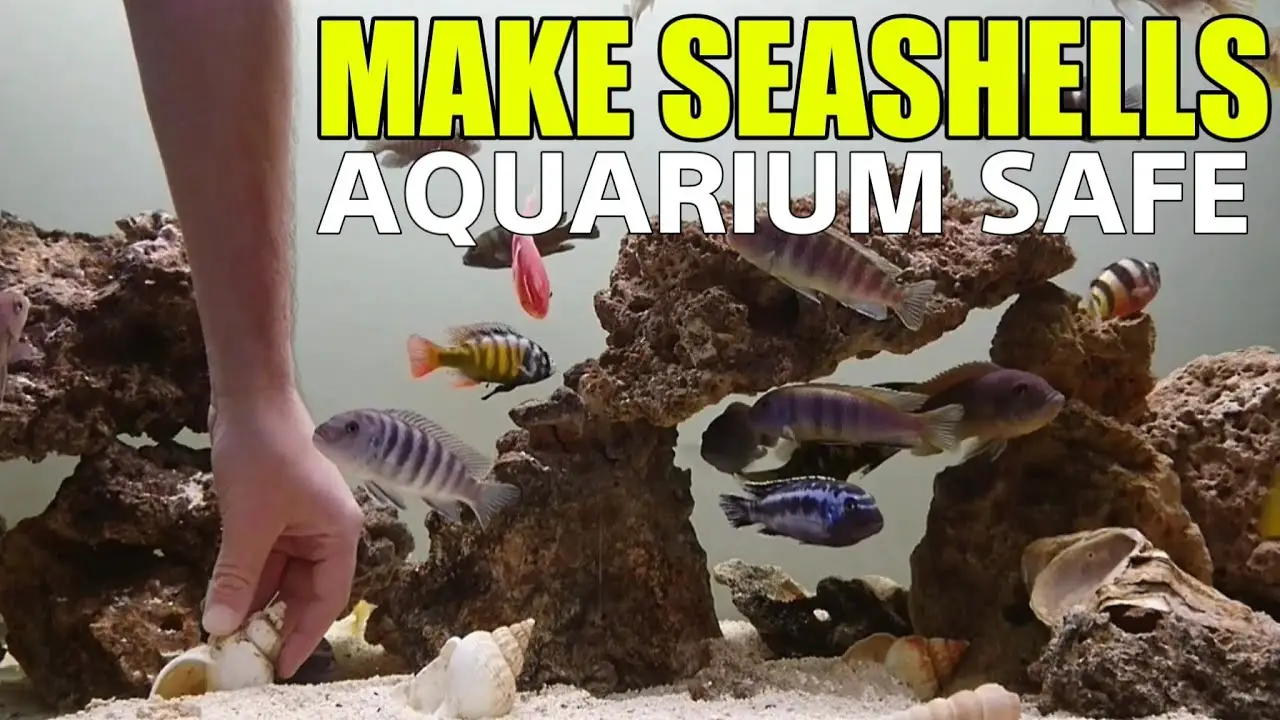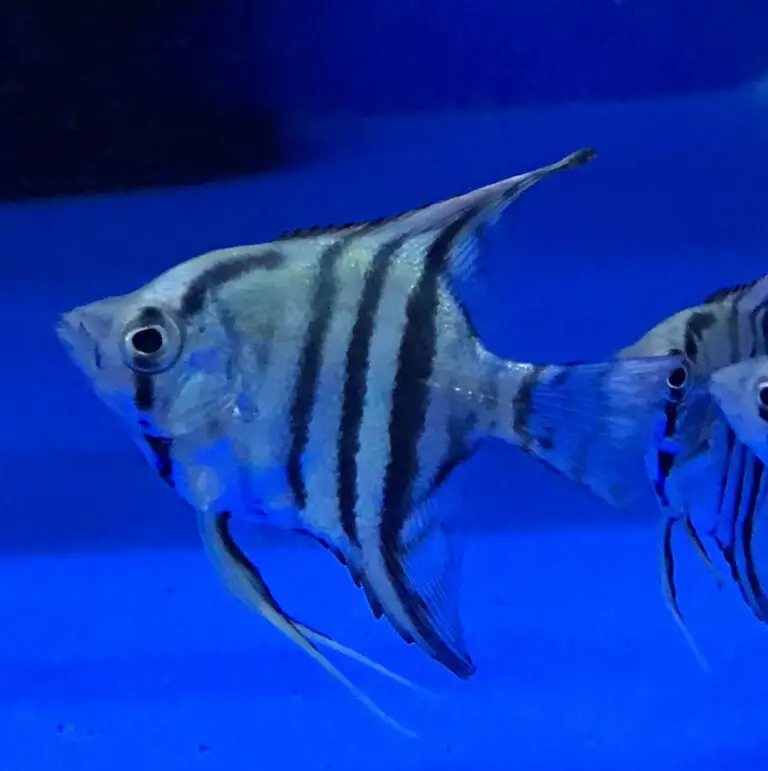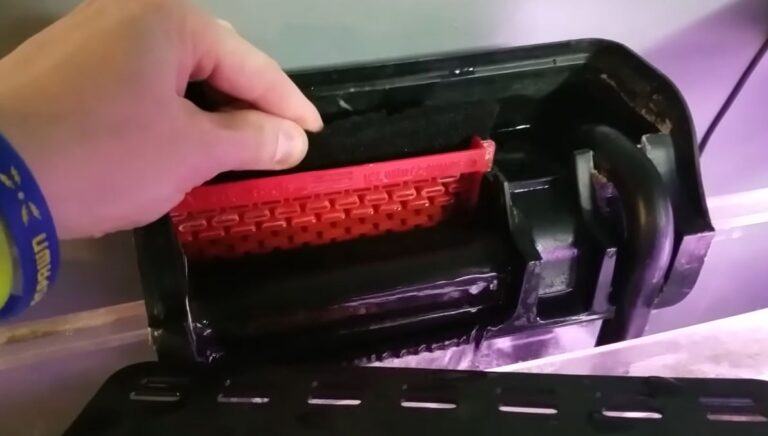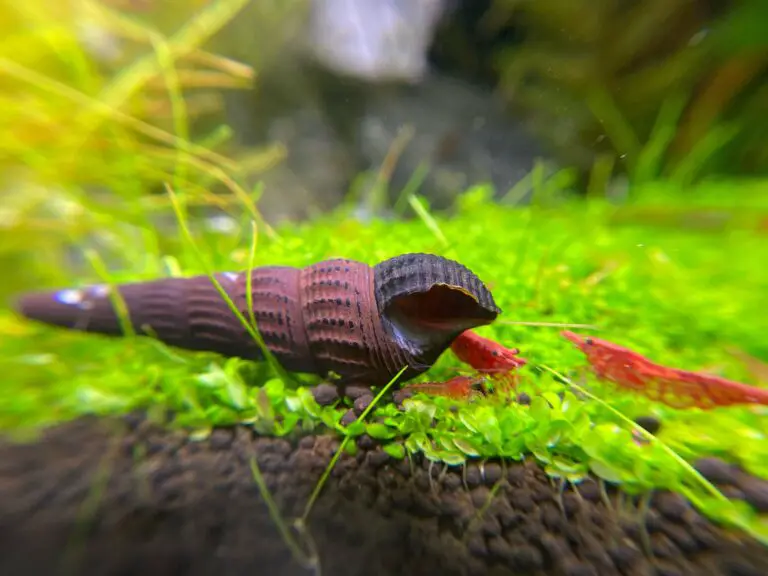How to Clean Seashells for Freshwater Aquarium?
To clean seashells for a freshwater aquarium, start by soaking the shells in warm water and white vinegar overnight.
This will help dissolve any debris or dirt on them. The next day, scrub off any remaining dirt with an old toothbrush.
Rinse the shells well with cold running water to remove all traces of the vinegar solution.
Finally, boil the shells in clean water for 5-10 minutes then let them cool completely before adding them to your tank.
Make sure you rinse away any residue from boiling so it doesn’t harm your fish or other aquatic life in your tank!
- Step 1: Collect the seashells
- Look for unbroken shells that are free from cracks or other damage
- Avoid picking up any shells with barnacles or other life forms attached, as these could contain organisms that can be harmful to your aquarium’s inhabitants
- Step 2: Soak the shells in a bleach and water solution
- Use one part bleach to ten parts of water and soak for about an hour
- The bleach will kill any bacteria on the shell as well as remove dirt and debris that may have adhered to it over time
- Step 3: Rinse off the shells thoroughly with fresh water after soaking in the bleach solution, making sure all traces of bleach have been removed before proceeding further with cleaning them
- Step 4: Place a few tablespoons of vinegar into a bowl filled with warm water, stirring until dissolved completely (approximately two tablespoons per gallon)
- Dip the rinsed seashells into this mixture for 15 minutes to help dissolve calcium deposits left behind by saltwater environments; this step is especially important if you plan on using them in freshwater tanks since high levels of calcium can harm fish or invertebrates living there
- Step 5: Remove from vinegar bath and dry off excess moisture with paper towels before placing them in your aquarium tank setup – make sure they’re securely placed so they won’t tip over easily when disturbed by fish!
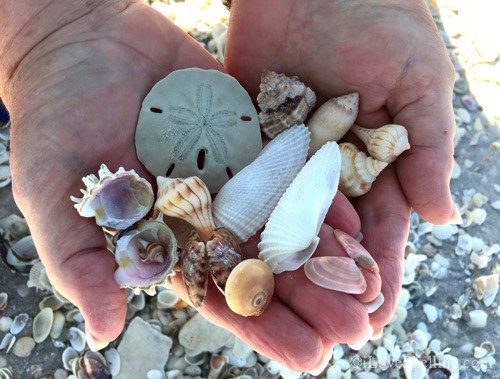
Credit: www.islandreal.com
How Do You Clean Sea Shells before Putting in an Aquarium?
Cleaning sea shells before putting them in an aquarium is important to ensure that the shells don’t introduce any harmful bacteria or parasites into your tank.
Before cleaning, you should inspect the shell for any existing cracks or damage. If there are any, discard it as these could introduce contaminants and make the inhabitants of your aquarium ill.
To clean the shells, start by rinsing them off with freshwater from a bucket or sink until all visible dirt has been removed.
Then soak them in hot water for 10 minutes to disinfect and remove algae growths; after this time has elapsed, scrub them gently with a soft brush to remove more debris and loosen up any stubborn stains/build-up on the surface of each shell.
Once done, rinse again under running water and dry thoroughly before adding it to your aquarium setup!
Can I Put Seashells in My Freshwater Aquarium?
Adding seashells to your freshwater aquarium can be beneficial, but they should not be the only decoration in the tank.
Seashells provide a natural look and feel to any aquarium, as well as offering hiding spots for fish.
They also create small crevices that are perfect for beneficial bacteria growth which helps keep water quality balanced.
However, it is important to note that some shells may contain high levels of salt or other minerals that could affect the health of your fish if added directly into the tank.
To avoid this problem, you should always rinse off any shells before placing them in your aquarium and make sure they are free from dirt or debris.
You should use caution when selecting shells – many types of mollusks (including clams) have sharp edges which could injure delicate fish like bettas or goldfish if placed in an overcrowded environment.
Finally, never add broken pieces of shell into your tank as these fragments can cause damage to filter systems and other equipment inside your aquarium.
With proper care and consideration for safety measures taken when introducing seashells into a freshwater aquarium, adding these elements can help enhance its beauty while creating interesting hiding places for aquatic life within it!
How Do You Clean And Disinfect Seashells?
Cleaning and disinfecting seashells is an important part of maintaining them in good condition.
The process begins by removing any dirt or debris from the shell with a soft brush and warm water.
Once this step is complete, you can use a mixture of 1 teaspoon bleach per gallon of water to soak the shells for 15 minutes.
Afterwards, rinse the shells off with clean water to remove any remaining chlorine. After rinsing, be sure to dry your seashells completely before displaying them or using them as decorations.
If desired, you can apply a light coat of mineral oil after they have been cleaned and dried in order to help keep their shine and prevent cracking over time.
With proper care, these beautiful pieces can remain beautiful for years!
What is the Best Way to Sanitize Shells?
The best way to sanitize shells is by using a combination of soap and hot water. Start by rinsing the shells in cold water to remove any dirt, debris or other contaminants that may be present.
Once all visible dirt has been removed, fill a bucket with hot soapy water and submerge the shells for about 15 minutes.
This will help loosen any remaining particles from the shell’s surface as well as help kill off any bacteria or fungus that may have taken hold there.
Lastly, rinse off the shells with clean cold water once again to remove all traces of soap residue before allowing them to air dry; this ensures they are perfectly safe for use.
How to Prepare Seashells for Freshwater Aquarium?
Seashells can make a great addition to any freshwater aquarium. Before adding seashells to your tank, however, it’s important to prepare them properly.
This includes thoroughly cleaning and rinsing the shells in warm water, then boiling them for 10 minutes before allowing them to cool down.
Additionally, soak the shells for an hour in a weak solution of bleach and water (with 1 part bleach per 10 parts water) before rinsing again with clean tap or dechlorinated water.
Finally, allow the seashells to dry before using them in your freshwater aquarium.
Can I Put Sea Shells in My Freshwater Tank?
No, you should not put sea shells in your freshwater tank. Sea shells are made of calcium carbonate and will slowly dissolve over time, releasing minerals into the water that can disrupt the delicate balance of a freshwater aquarium.
In addition, some snails may lay eggs inside the shell which could introduce unwanted pests to your tank.
Aquarium Shells
Aquarium shells are a great and easy way to add natural beauty and texture to any aquarium.
They can be used as decorations, but they also serve many other useful purposes such as providing fish with hiding spots, stabilizing the pH level in the tank, and helping to maintain good water quality.
Aquarium shells come in a variety of sizes, shapes and colors so you can create your own unique underwater environment for your fish.
Can I Put Seashells in My Betta Fish Tank?
Yes, you can put seashells in your betta fish tank! Seashells provide a great place for your betta to hide and explore.
Be sure to choose non-toxic shells that are free of sharp edges or jagged points, so they won’t hurt your fish.
Make sure to clean the shells thoroughly before putting them into the tank this will help remove any bacteria or other contaminants that could be harmful to your betta.
Will Seashells Raise pH?
Seashells are composed of calcium carbonate, which when dissolved in water, helps to raise the pH level.
This is especially true for seashells that have been broken down into small pieces and allowed to dissolve in an aquarium or pond environment.
The increase in pH can help provide a more hospitable living environment for fish and other aquatic life forms.
Can I Put Seashells in My Turtle Tank?
Yes, you can put seashells in your turtle tank. Not only do they add an attractive decorative element to the environment, but they also provide a natural hiding place and platform for basking.
However, it is important to make sure that the shells are thoroughly cleaned with hot water before placing them in the tank as this will help prevent any contamination of the habitat.
Be sure to avoid adding any sharp shells or other items that could potentially harm your turtle’s delicate skin.
Wonder Shell
Wonder Shell is an innovative new product made of plant-based wax that provides an all-in-one protective solution for mobile phones and other electronic devices.
It forms a thin, invisible layer over the device’s surface that repels water, dust, oil and dirt while also providing scratch protection.
Wonder Shell is easy to apply and can be used on any type of device regardless of shape or size.
It will not affect your phone’s performance in any way and comes with a lifetime warranty.
Can I Put a Dried Starfish in My Aquarium?
No, it is not recommended to put a dried starfish in your aquarium. Starfish need humidity and water to survive, so adding a dry starfish into an aquarium will cause the starfish to die almost immediately due to lack of moisture.
Dried starfishes can contain bacteria or parasites which could be dangerous for your other aquatic life.
For these reasons, it is best not to put any type of dried sea creature in an aquarium.
Conclusion
Cleaning seashells for freshwater aquariums is a relatively easy task that can give your tank an extra boost of color and fun.
While there are many methods to cleaning, the most important thing is to make sure you are taking the proper safety precautions such as wearing gloves, using boiling water or bleach, and disposing of any shells containing dead organisms.
With these tips in mind, you will be able to easily cleanse your shells for a safe and beautiful addition to your aquarium!
